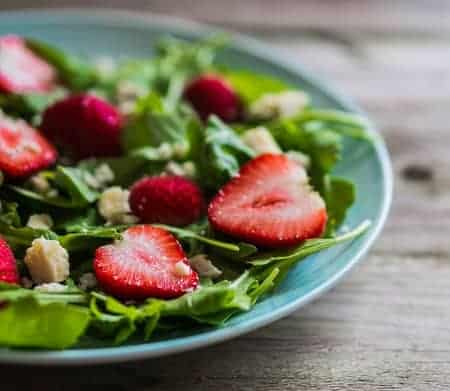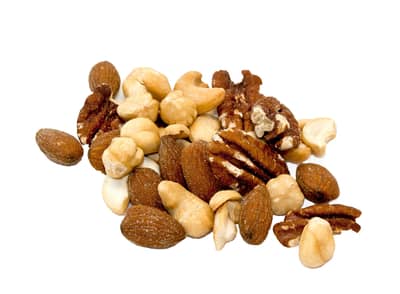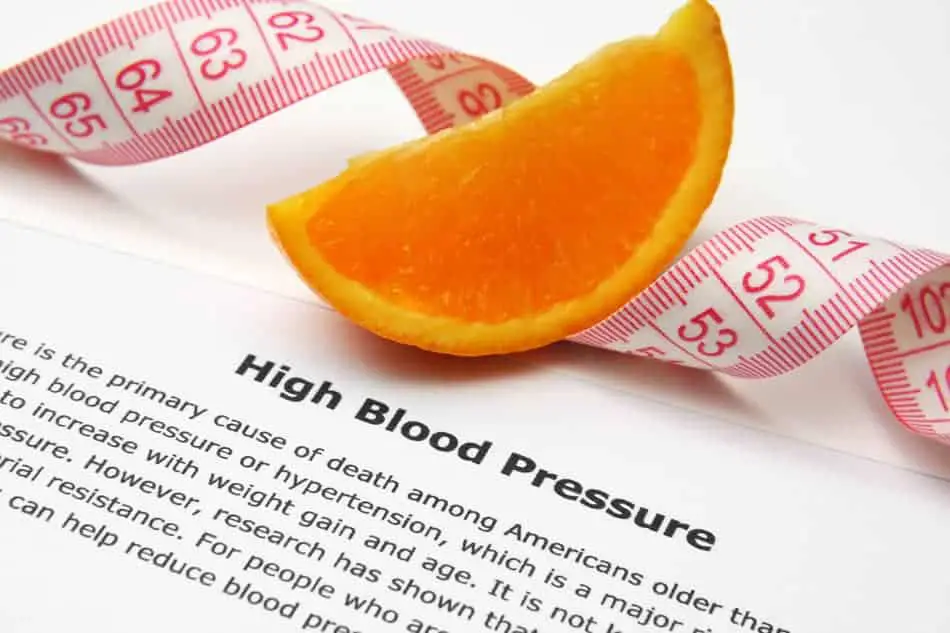If you’re a vegan with high blood pressure, you’re not alone. It can be frustrating to make the switch to a diet that’s known to be among the healthiest eating patterns and not have your blood pressure change to reflect the new healthy way of eating.
Can vegans have high blood pressure? Yes. While plant-based diets offer numerous benefits when it comes to lowering blood pressure, diet is only one of many factors to consider. As for dietary factors, the quality of foods that make up your intake as well as the length of time you’ve been eating plant-based both play a big role.
What we’ll do here is cover some of these factors in depth.
Can a Vegan Diet Cause High Blood Pressure?
No, if an elevation in blood pressure happens to coincide upon adoption of the vegan diet, the increase in BP is not due to features inherent to the plant-based nature of the eating pattern. Blood pressure can fluctuate for a number of reasons including sleep, stress levels, and even arm position.
In their position paper on plant-based diets, the Academy of Nutrition and Dietetics (AND) stated, “Vegetarians also appear to have lower low-density lipoprotein cholesterol levels, lower blood pressure, and lower rates of hypertension and type 2 diabetes than non-vegetarians.”1
In the 2010 Dietary Guidelines for Americans, the U.S. Department of Agriculture (USDA) and Department of Health and Human Services (HHS) stated that vegetarian (and vegan) dietary patterns have been associated with reductions in blood pressure, and related conditions including obesity and cardiovascular disease.2
Quick story. When my friend went vegan, he suddenly got goiter—the bulge you get in your neck when your body’s fighting an infection. You can also get it from iodine deficiency. It turned out to be an infection from a mouth guard he was using at night. Anyway, as you can imagine, when he got the bulge in his neck his mind immediately went to the new diet—that must be the culprit!
The point is, you’ll go through periods in your life when your BP is a bit higher than usual or a bit lower. The thing is that, when you switch to a new way of eating or a new medication, any changes in how you feel or look that happen to overlap with your adopting the new habit or way of eating will immediately come under suspicion.
That said, there are ways eating patterns can change for the worse after switching from one diet to another. For example, you may find yourself eating more processed foods high in sodium which may drive up your blood pressure. However, eating more salt-laden processed foods isn’t a feature that’s inherent to any given diet—be it plant-based diets, or the paleo diet, etc.
How Long Does It Take to Lower Blood Pressure with a Vegan Diet?
Above it was mentioned that the length of time you’ve been eating vegan is also a factor to consider. We often look at cohort studies like the EPIC-Oxford and Adventist health studies for insight into how plant-based eating affects disease parameters. For this question, though, we need a meta-analysis of clinical trials.
Intervention trials are useful for understanding how a given way of eating affects disease risk factors after introducing a change to the diet like eliminating meat, eating more plant foods, etc.
So, how long does it take to lower blood pressure with a vegan diet? In general, it takes a few weeks to see improvements in blood pressure after switching plant-based diets. Studies that have shown improvements in shorter time frames usually involved medications which can significantly lower blood pressure in a matter of days.3
This is based on a meta-analysis by Yokoyama et al. included seven trials totalling 311 participants.4-11 Of the seven trials, two trials studied vegans, specifically .10,11 The trials were conducted from 6 to 52 weeks, with a mean duration of 15.7 weeks. Blood pressure improvements were seen in studies that were on the shorter side (6 weeks).
What did they find? Compared to omnivorous diets, plant-based diet patterns were associated with mean reductions of −4.8 mmHg and −2.2 mmHg in SBP and DBP, respectively.4
Tips to Lower Blood Pressure on the Vegan Diet
If it’s been a few weeks since you’ve adopted a vegan diet and you’re not seeing the improvement in blood pressure you hoped for (or any for that matter), there are measures you can take to maximize the effect of plant-based eating on blood pressure.
Plant-based diets are not a monolith, and the quality of one vegan’s dietary choice can be drastically different from another’s. Try some of these tips to take full advantage of what plant-based diets have to offer when it comes to lowering blood pressure.
This will be an abridged version. For more in-depth information on the best vegan foods for blood pressure, I wrote an entire article on the subject you should check out here. Here, I’ll mostly cover food whereas in the article I go over individual nutrients as well.
Eat Nitrate-Rich Vegetables

Not all, but a lot of vegetables like beets and greens (spinach, arugula, swiss chard, etc.) are packed with nitrates. These molecules get converted to nitrites by the bacteria on our tongues. Nitrites are used for nitric oxide (NO) production and may improve NO bioavailability leading to more vasodilation which lowers blood pressure.12
To really maximize the effects of these veggies on blood pressure, you can benefit from consuming up to 500 g per day of greens and/or beets. If you’re not into cooking, then one monster green smoothie per day can easily achieve this ambitious amount.
Another way people get lots of nitrates in their diet is by drinking beet juice. You can get a juicer, but I prefer getting the powdered version. Dried/powdered beets offer a few benefits over beet juice:
- Convenience. You don’t have to go through the trouble of shopping for and juicing a bunch of beets, not to mention cleaning the juicer which is a nightmare.
- Efficiency. Less wasteful and more cost-efficient. Sure, beets are fairly cheap, but you have to go through so many to get a full glass of juice. That’s a lot of food waste
- Nutrient density. More nutrients—similarly, because you’re having to extract the juice from so many beets you’re leaving a lot of nutrients on the table… or in the juicer. We’re talking lots of fiber, micronutrients, and phytonutrients. These nutrients just get thrown out unless you get really creative and make a soup or something
The freeze-drying process used to make dried fruits maintains the nutrients while still providing you with the material to make a smoothie or drink. But, the juice made from the powder contains the entire beet and doesn’t leave anything out.
Eat at Least One ¼ Serving of Low-Sodium Nuts Daily
One really large meta-analysis, including 21 clinical trials, examined the effects of nut consumption on systolic and diastolic blood pressure. The meta-analysis included studies involving a wide variety of nuts including:13

- Almonds
- Cashews
- Walnuts
- Pistachios
- Pecans
- Hazelnuts
- Macadamia nuts
- Soy nuts
- Peanuts
The authors concluded that nut consumption lowered systolic BP in participants without T2D and that pistachios seemed to exert the strongest effect on reducing overall BP. Mixed nuts were also effective.13
So, it’s a good idea to get a nice mix of the above nuts, and include lots of pistachios.
Eat a Minimum of 1/2 Cup Legumes per Day
Getting plant protein from beans instead of animal protein has long been considered an evidence-based approach for preventing and managing elevated BP and hypertension.14,15
A meta-analysis and systematic review looking at controlled feeding trials (a very robust form of research) found legume consumption to result in a significant reduction in BP in persons with and without hypertension.16
A few large observational trials have had similar findings, with bean consumption being shown to have a beneficial effect on blood pressure.17,18
An analysis of data from NHANES (a long acronym meaning, National Health and Nutrition Examination Survey) found self-reported legume consumers to consume more dietary fiber and some minerals (iron, potassium, magnesium, and copper) compared to folks who did not report eating beans—which could account for the effects beans are known to have on blood pressure.
Specifically, those between 20 and 40 years of age who reported regularly consuming beans were found to have a 47% reduction in their risk for having high systolic BP. They also had 1.7 mmHg lower diastolic BP compared to those not reporting bean consumption.19
Remember to rinse/drain your beans or purchase reduced- or no-salt varieties if you’re going with canned legumes. Or purchase dry beans. Because, while canned cooked beans maintain their nutritional value, almost anything from a can will be higher in sodium, as the mineral is added to increase shelf life.20,21
Include Soy and Soy Foods in Your Diet

One really large meta-analysis including 27 randomized controlled trials (RCTs) involved subjects undergoing a dietary intervention where they were provided soy protein in place of protein from other sources. The subjects experienced reductions of 2.21 mm Hg and 1.44 mm Hg in systolic BP and diastolic BP, respectively compared to the control group.22
Like legumes and nuts, no one really knows what the underlying mechanisms could be that account for the beneficial effects of soy on blood pressure. It could be any of a number of bioactive plant compounds present in the soy protein source. Soy foods, food products, and protein supplements contain isoflavones, a phytochemical that may by anti-hypertensive. Some suspect it may be the arginine. The soy protein itself has high amounts of arginine, the amino acid that’s involved in NO production.23-27
Anyway, that wraps it up. Blood pressure can be elevated for a number of reasons, and diet isn’t the only factor. If you have high blood pressure, check with your doctor to determine what the underlying reason is.
References
- Craig WJ and Mangels AR. Position of the American Dietetic Association: vegetarian diets. J Am Diet Assoc. 2009;109(7):1266-82
- USDA (U.S. Department of Agriculture) and HHS (U.S. Department of Health and Human Services). 2010. Dietary Guidelines for Americans, 2010. 7th ed. Washington, DC: U.S. Government Printing Office.
- Y Yokoyama, et al. Vegetarian diets and blood pressure: a meta-analysis. JAMA Intern Med. 2014;174(4):577-587.
- Yokoyama, Y., Nishimura, K., Barnard, N.D., Takegami, M., Watanabe, M., Sekikawa, A., Okamura, T., Miyamoto, Y., 2014. Vegetarian diets and blood pressure: a meta-analysis. JAMA Intern. Med. 174, 577–587.
- Rouse, I.L., Beilin, L.J., Armstrong, B.K., Vandongen, R., 1983b. Blood-pressure-lowering effect of a vegetarian diet: controlled trial in normotensive subjects. Lancet 1 (8314–5), 5–10.
- Margetts, B.M., Beilin, L.J., Vandongen, R., Armstrong, B.K., 1986. Vegetarian diet in mild hypertension: a randomised controlled trial. Br. Med. J. (Clin. Res. Ed.) 293 (6560), 1468–1471.
- Hakala, P., Karvetti, R.L., 1989. Weight reduction on lactovegetarian and mixed diets. Changes in weight, nutrient intake, skinfold thicknesses and blood pressure. Eur. J. Clin. Nutr. 43 (6), 421–430.
- Kestin, M., et al., 1989. Cardiovascular disease risk factors in free-living men: comparison of two prudent diets, one based on lactoovovegetarianism and the other allowing lean meat. Am. J. Clin. Nutr. 50 (2), 280–287.
- Sciarrone, S.E.,et al., 1993. Biochemical and neurohormonal responses to the introduction of a lacto-ovovegetarian diet. J. Hypertens. 11 (8), 849–860.
- Nicholson, A.S., et al., 1999. Toward improved management of NIDDM: a randomized, controlled, pilot intervention using a lowfat, vegetarian diet. Prev. Med. 29 (2), 87–91.
- Ferdowsian, H.R., et al., 2010. A multicomponent intervention reduces body weight and cardiovascular risk at a GEICO corporate site. Am. J. Health Promot. AJHP 24 (6), 384–387.
- Ajay Machha and Alan N. Schechter. Dietary nitrite and nitrate: a review of potential mechanisms of cardiovascular benefits. Eur J Nutr. 2011;50(5): 293–303.
- Mohammadifard, N., et al., 2015. The effect of tree nut, peanut, and soy nut consumption on blood pressure: a systematic review and meta-analysis of randomized controlled clinical trials. Am. J. Clin. Nutr. 101 (5), 966–982.
- Altorf-van der Kuil W, Engberink MF, et al., 2010. Dietary protein and blood pressure: A systematic review. PLoS One 5 (8):e12102.
- McDougall J. 2016. The Healthiest Diet on the Planet: Why the Foods You Love—Pizza, Pancakes, Potatoes, Pasta, and More—Are the Solution to Preventing Disease and Looking and Feeling Your Best. New York: HarperCollins.
- Jayalath VH, et al., 2014. Effect of dietary pulses on blood pressure: A systematic review and meta-analysis of controlled feeding trials. Am J Hypertens 27 (1):56–64.
- He J, Whelton PK. 1999. Effect of dietary fiber and protein intake on blood pressure: A review of epidemiologic evidence. Clin Exp Hypertens 21 (5–6):785–96.
- Bazzano LA, et al., 2001. Legume consumption and risk of coronary heart disease in US men and women: NHANES I Epidemiologic Follow-Up Study. Arch Intern Med 161 (21):2573–8.
- Papanikolaou Y, Fulgoni VL III. 2008. Bean consumption is associated with greater nutrient intake, reduced systolic blood pressure, lower body weight, and a smaller waist circumference in adults: Results from the National Health and Nutrition Examination Survey 1999–2002. J Am Coll Nutr 27 (5):569–76.
- Zanovec M, et al., 2011. Comparison of nutrient density and nutrient-tocost between cooked and canned beans. Food Nutr Sci 2 (02):66.
- Greger M, Stone G. 2015. How Not to Die: Discover the Foods Scientifically Proven to Prevent and Reverse Disease. New York: Flatiron Books.
- Dong, J.Y., et al., 2011a. Effect of soya protein on blood pressure: a meta-analysis of randomised controlled trials. Br. J. Nutr. 106 (3), 317–326.
- Squadrito, F., et al., 2002. The effect of the phytoestrogen genistein on plasma nitric oxide concentrations, endothelin-1 levels and endothelium dependent vasodilation in postmenopausal women. Atherosclerosis 163 (2), 339–347.
- Chin-Dusting, J.P., et al., 2004. The isoflavone metabolite dehydroequol produces vasodilatation in human resistance arteries via a nitric oxide-dependent mechanism. Atherosclerosis 176 (1), 45–48.
- Luiking, Y.C., et al., 2010. Regulation of nitric oxide production in health and disease. Curr. Opin. Clin. Nutr. Metab. Care 13 (1), 97–104.
- Urschel, K.L., et al., 2007. A multitracer stable isotope quantification of the effects of arginine intake on whole body arginine metabolism in neonatal piglets. Am. J. Physiol. Endocrinol. Metab. 293 (3), E811–E818.
- Dong, J.Y., et al., 2011b. Effect of oral L-arginine supplementation on blood pressure: a meta-analysis of randomized, double-blind, placebo-controlled trials. Am. Heart J. 162 (6), 959–965.


